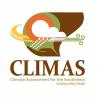Mapping Climate Services
Adapting to climate change requires decision makers to have information in hand that is relevant to solve their problems, information that is salient, credible and legitimate. Decision makers, however, do not often have the information they need; perhaps they are unaware of existing useful information, get too much of the wrong kind of information, or have information needs that go unmet, leaving them to muddle through important decisions that could help people adapt to climate variability and change. Hundreds of organizations have been created or evolved to help create, translate and disseminate potentially useful climate information. Such “climate service organizations” exist in both public and private domains, at research universities and private organizations, and represent a wide variety of sectors. Unfortunately, potential users of climate information often do not know where to look for relevant information, nor are producers of climate information well-connected to potential users, resulting in a gap that separates the supply and demand of climate information. This project developed a database of climate-service organizations in the NOAA West region as a first attempt to bridge the gap between producers and users. Organizations were assigned attributes based on the sector in which they work, the types of information they provide, the service area covered, the type of sponsoring organization, and many others. The finished product is a searchable database that is open and usable by the public as well as a report that provides preliminary analysis of the findings from the database.
